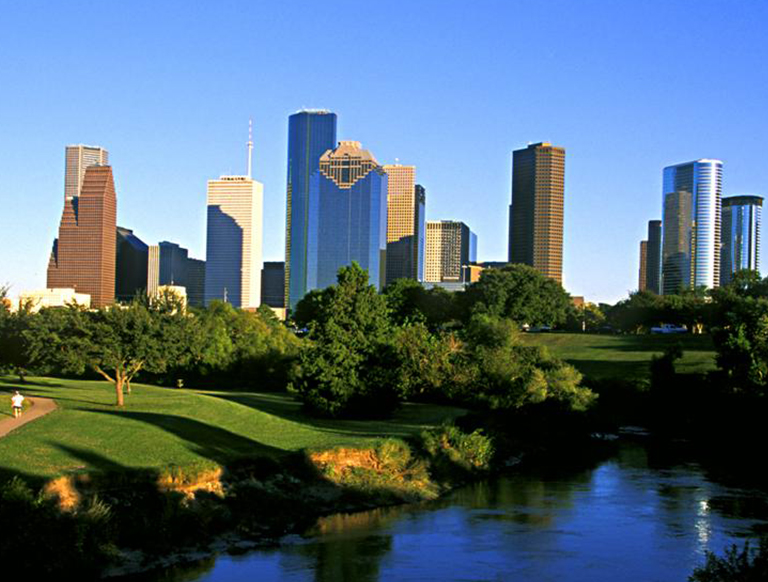
HOUSTON—Last year was a pivotal one for the office construction sector. Construction costs rose 3% and are expected to continue climbing in 2018 and beyond. Office leasing fundamentals are pivoting as new construction deliveries begin to outpace leasing demand. Moreover, tenant improvement allowances spiked nearly 10% in the latter half of 2017, outpacing rent growth.
JLL recently released its 2018 US and Canada Office Fit-Out Guide. This report that compares build-out costs across three different office styles in 59 markets to give tenants a sense of how choices can affect a fit-out budget.
“Our clients are consistently coming to us with questions about how to get the most bang for their buck when it comes to office fit outs,” said Todd Burns, president, JLL project and development services. “A lot of people might not realize how the smallest decisions around things like lighting, fixtures and quality of materials used can add or shave off thousands of dollars. In a progressive-style space, for example, using high-complexity elements can be an average of $66.10 more per square foot than using base complexity.”
Office styles are no longer a one-size-fits-all. These three styles offer ranges in both floorplans and cost:
Progressive-style offices: Average cost to build is $152.23 per square foot
These are the fastest growing office category and feature an open office floorplan with 100% bench-style seating, i.e., no enclosed offices, and common areas for collaboration. Project budgets tend to be light on hard costs due to minimal dividing walls and private offices. However, progressive spaces typically have higher technology expenses due to more connected conference and collaboration areas. These are popular with tenants such as technology companies, start-ups and progressive corporate offices.
Moderate-style offices: Average cost to build is $158.23 per square foot
The majority of current US offices are built in a moderate style. These offices have 10% of the space dedicated to enclosed offices and 90% open floorplan with reasonably sized workstations. The design also includes a healthy mix of conference rooms and two to four multi-use spaces throughout. Project budgets are comparably average on hard costs due to moderate use of dividing walls, but benefit from saving on open floorplan space. These are popular with tenants such as semi-modern office users and corporate offices transitioning to more efficient models.
Traditional offices: Average cost to build is $177.06 per square foot
Traditional office styles have a private office-heavy floorplan with 30% enclosed offices and 70% open floorplan with large workstations and no bench seating. The design includes several traditional conference rooms and one collaboration space. Tenants can expect to maintain privacy but miss out on increased efficiency opportunities. Project budgets tend to have the highest build-out costs as a result of costly private office furniture and high-walled workstations. However, tenant factors are comparatively small due to lessened need for common areas. These are popular with tenants such as law firms and traditional financial companies.
Beyond office style, there are a handful of added dynamics that can impact space design and overall cost. Space quality and complexity evaluates the physical design elements of an office and accounts for the quality of selected finishes and improvements, complexity of space upgrades and design work, and amount of technology additions.
Specific to the office fit-out conversation, rising materials costs (+3% year-over-year) and construction labor rates (+3.4% year over) continue to affect project budgets. An uptick in labor wages is expected to endure through 2018 as the shortage of skilled construction labor persists. The current unemployment rate is 4.5% and job growth in the industry remains flat. Demand for construction and building materials will also remain strong as the industry pivots toward adaptive reuse, renovation and fit-out projects in 2018.
Aided by above-average tenant improvement allowances, Houston is among the most affordable markets in the US and Canada for build-out space, be it open concept or not, GlobeSt.com learns.
For progressive/open office plans, the US and Canada average per square foot is $152.23, whereas in Houston, it is $139.83 per square foot. For moderate office plans of open/private mix space, the US and Canadian average price per square foot is $158.23 and in Houston, it is $145.01. The traditional/private office plan is an average of $177.06 per square foot in the US and Canada, and the Houston price per square foot price is $161.53.
“Houston construction costs have traditionally been very competitive with other major US cities, thanks to the region's generally low cost of doing business,” John Roberts, managing director, JLL project and development services, tells GlobeSt.com. “That said, construction cost pressures are increasing with some evidence of labor shortages in select trades.”
The average tenant improvement package for second-generation space in Houston is $60 price per square foot, approximately 35% higher than the US and Canada average of $44 per square foot. While the most obvious reason, high office vacancy, is not the only force driving above-average tenant improvement packages in Houston. The flight to quality theme playing out in Houston and across US markets has a role to play as well, says JLL. Landlords of older buildings are increasingly offering large TI packages to encourage tenants to update and build-out spaces instead of moving to new supply. Meanwhile, landlords of high-quality developments have been incentivizing tenants with large TI packages to help offset the higher budget that tends to come with building out an office in first-generation or cold shell space.
© Touchpoint Markets, All Rights Reserved. Request academic re-use from www.copyright.com. All other uses, submit a request to [email protected]. For more inforrmation visit Asset & Logo Licensing.







